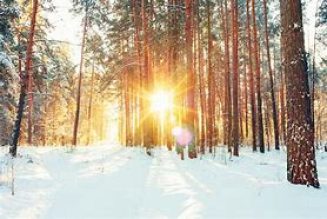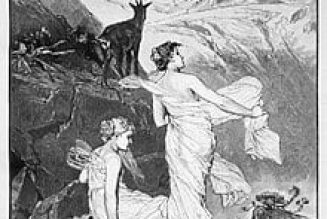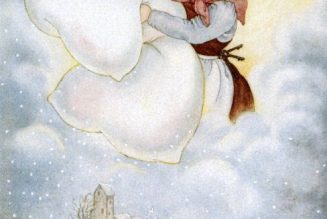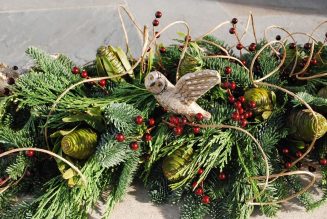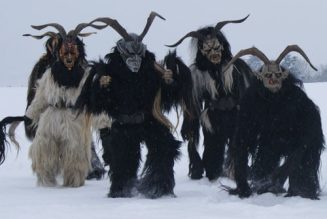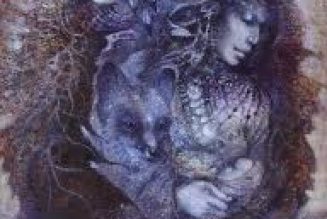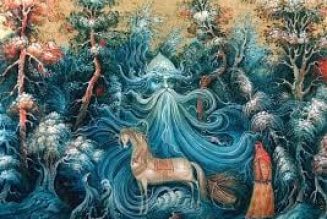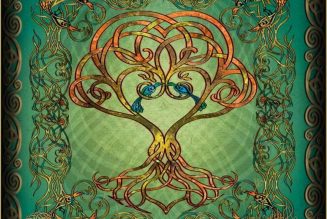
The usual dates supplied for the traditional Christmas season start with November 11 and end on February 2. Here is a small survey of the most important dates in the Christmas calendar.
November
11. Martini or St. Martin’s Day
Old start of winter; first slaughter feast after harvest time
25. St. Catherine’s Day
Time to start Christmas baking
30. St. Andrew’s Day and Night
Start of the new church year. Day of fortune-telling for love matches and weather for the coming year. Astrological lucky day.
December
1. Beginning of the Advent season and the Advent calendar. Start of the klaubaufgehens (wood gathering).
4. St. Barbara’s Day
Time to sow the “Barbara wheat.” In Provence, wheat is germinated in a saucer on Saint Barbara’s Day. The higher the wheat grows, the greater the prosperity it foretells. On this day, one creates Barbara’s boughs by bringing in branches of fruit trees and putting them in vases to force them to bloom. When they blossom, one can foretell an individual’s luck in love as well as the quality of the fruit harvest for the next year.
6. St. Nicholas Day
End of klaubaufgehens. St. Nicholas brings presents to the children. Mexico: Houses are decorated with Flor de San Nicolás.
7. “Bad luck day”
8. Mary’s conception
10. Astrological good luck day
11. “Bad luck day”
13. St. Lucy’s Day
Old winter solstice (before the advent of the Gregorian calendar, this was considered the shortest day of the year). Night for driving away ghosts and witches.1 Perchtennacht (blackest night); time to cut the hazel wood rod.
17. Christ Child gun salute2
Start of the Saturnalia in Rome.
19. End of the Roman Saturnalia (pre-Caesarian times)
20. Astrological good luck day
21. St. Thomas Day3
Astronomical winter solstice. Most common beginning of the raw nights and start of the smudging nights during which house, court, and stables are smudged in purification rituals.
22. The sun enters the zodiacal sign of Capricorn
23. End of the Roman Saturnalia. (Saturday takes its name from “Saturn day.”)
24. Holy Night. Night of Christ’s birth; Christ’s night. More modern beginning of the raw nights.
25. First day of Christmas.
Sun day. Winter solstice and rebirth of the sun (sol invictus) in Roman times. Birthday of Mithras, ancient Persian god of light.
26. Second day of Christmas.
Boxing Day. St. Stephen’s Day. Ilex (holly) bushes are carried from village to village.
“The time between the years.” Oracle nights, lot nights.
27. Third day of Christmas.
Fudel (women beat men with life rod branches). St. John’s Day (farmer holiday).
28. Fourth day of Christmas.
The day of the innocent children.
29. Astrological good luck day
31. Sylvester
Turning of the year, named after the holy Pope Sylvester I (ca. 314–335 CE). Night of St. Matthew.
January
1. New Year’s Day
Start of January. January is named after the Roman god Janus.
2. End of the raw nights (in more modern traditions the raw nights end on January 5).
5. The last day of Christmas. The children plunder the Christmas tree.
In the night before January 6, Befana, the Italian Christmas witch or three king fairy, comes down the chimney and fills children’s boots with sweets. To children who were not well behaved during the preceding year, she brings ashes, coal, and garlic.
6. Three Kings Day
Epiphany. Baptism of Christ. Birthday of Dionysus, Greek god of wine, vegetation, and ecstasy. Old change of times.
7. Old St. Valentine’s Day4
February
2. Candlemas
Official end of the Christmas season. Time of light processions (grounded in Celtic Candlemas). Rituals performed for the security and protection of the fertility of the fields.
